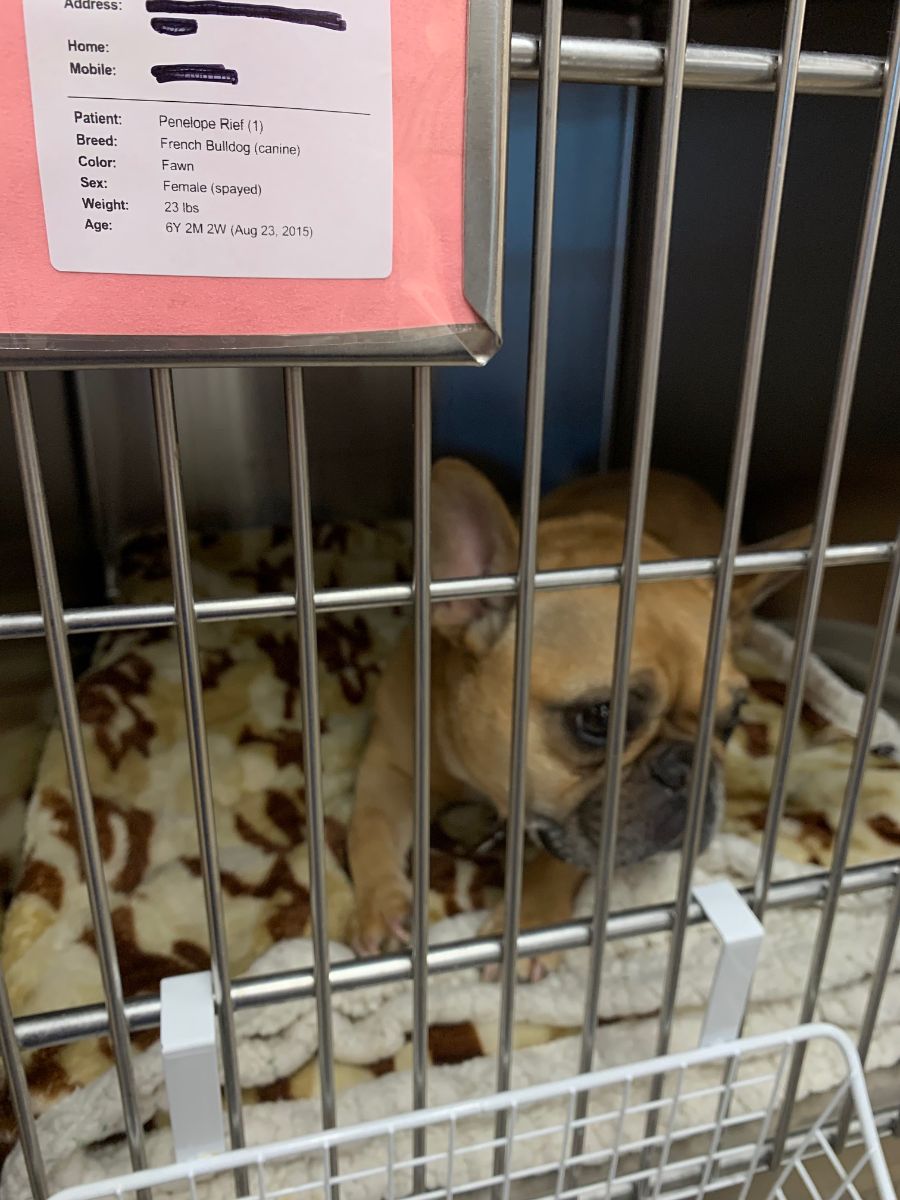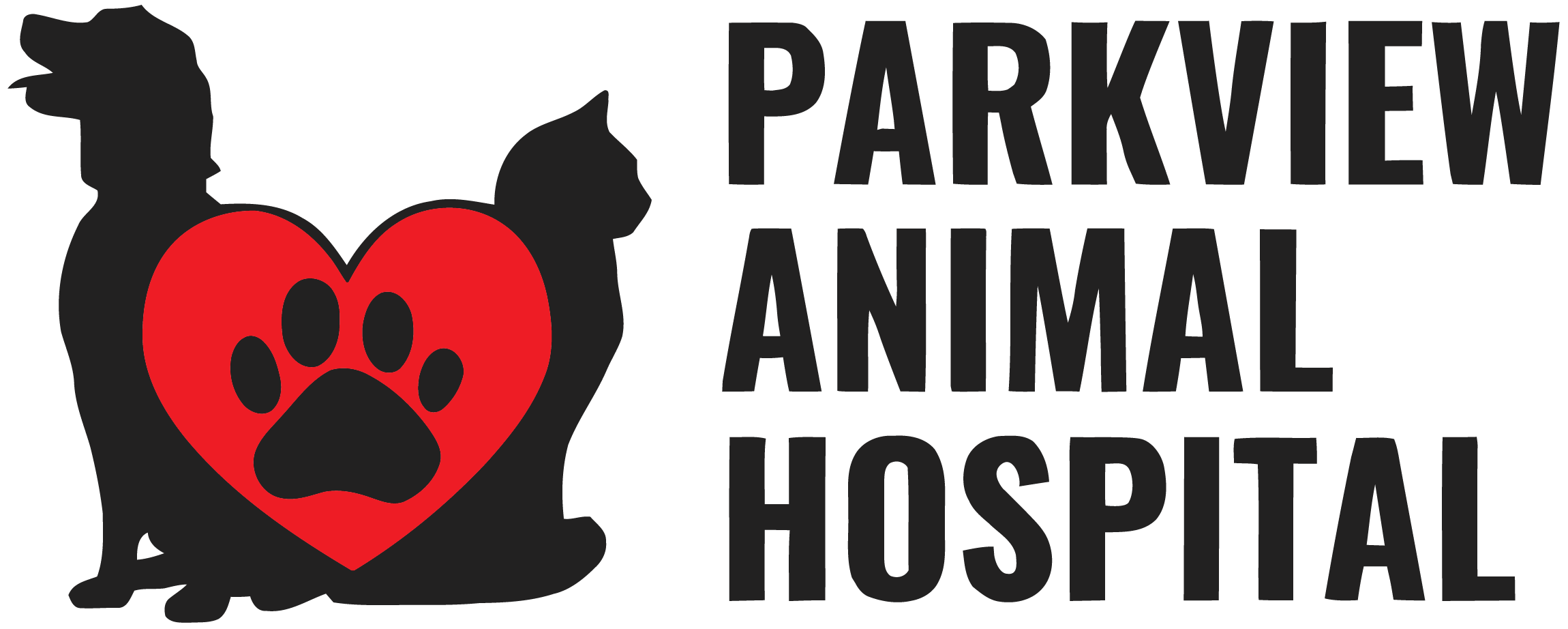Pet Dental Health
Have you ever wondered what your pet’s dental cleaning day looks like?
We took several photos from start to finish of when Dr. Rief’s Frenchie (“Penelope”) got her teeth cleaned and have outlined the process below. The purpose of this post is to educate our clients on what all goes into a dental cleaning and how your pet is closely and carefully taken care of to ensure their day goes as smoothly as possible.
WARNING: There are some images that show somewhat graphic medical representation of the patient under anesthesia.

Pre-Dental Steps
Each patient gets their own kennel to prepare and recover in, with a comfy blanket to rest on.
First, a pre-anesthetic physical examination is performed. A TPR (temperature, pulse, and respiratory rate) are obtained, and the doctor listens carefully to the heart and lungs, amongst other things. Blood work is also performed (typically a few days in advance). These things will help us to identify if there are any potential underlying concerns we should be aware of for the patient’s anesthetic plan.
Anesthesia Steps
A pre-anesthetic medication injection is given, which helps to relax the patient and get pain medication on board for the procedure. Then an intravenous catheter is placed (typically in a front leg), and additional anesthetic medication is administered through this catheter.
Once they are nice and sleepy, an endotracheal breathing tube is placed down their trachea (“windpipe”), which will not only provide the inhalation gas anesthesia but will also protect their airway from all the water, polishing cream, etc. from getting into their lungs.
A Licensed Veterinary Technician (LVT) then hooks the patient up to the multi-parameter monitoring unit, which provides us with constant health data throughout their procedure to ensure they are not only handling the anesthesia well but are also under the correct depth of anesthesia, so they don’t wake up, nor feel any potential discomfort during their procedure. The vitals that are continually obtained and recorded include ECG (electrocardiogram), temperature, heart rate, respiratory rate, SpO2 (how well they are oxygenating), CO2 (exhaled gases) & blood pressure. The LVT also monitors the depth of anesthesia as well as patient mucous membrane color CRT (capillary refill time) and ensures the patient’s body temperature is normal. Generally, a patient’s body temperature will drop while they are under anesthesia, so they are warmed via external thermoregulation via a warming blanket, warmed towels, socks (they like to lose heat their paws!), IV fluid warmer, etc. The patient is also hooked up to continuous intravenous fluids, which help to maintain proper blood pressure during anesthesia.
Dental Procedure
Once the patient is all hooked up and is confirmed to be doing well under anesthesia, intra-oral dental radiographs are then obtained by a second LVT. Did you know the vast majority (75%+) of dental disease is actually under the gumline where we can’t see?! Oftentimes, a tooth can look completely normal to the naked eye, but radiographs will show that there is a tooth root abscess or other pathology which indicates the tooth needs to be worked on (extracted, root canal, or bonded/sealed). This is also the main reason it is difficult for us to predict if your pet might need dental extractions during a routine, awake physical examination. Once the entire mouth is radiographed, the veterinarian will look closely at the images, as well as probe around each and every tooth to determine what pathology exists (if any). All dental pathology and changes are recorded into your pet’s record.
If there are any teeth that need to be worked on, the doctor or LVT will contact you to discuss the recommendations and additional costs to do so. If a tooth needs to be extracted, typically, a dental nerve block is instilled to help numb the mouth to aid in the comfort level both during and after the procedure is complete (similar to if you’ve had your mouth numbed for a cavity filling). Sometimes after an extraction is complete, your pet may have stitches to help close the extraction site. These stitches will absorb and/or fall out over time.
Recovery
Once the teeth are analyzed/complete, the gas anesthesia is then stopped, and your pet will breathe in straight oxygen for 10 minutes. This helps to flush out as much of the remaining gas anesthesia that is left in their system. Once your pet is waking up enough & is swallowing, the breathing tube is then removed. An LVT sits with your pet during this entire process as well as in recovery and continues to monitor their vitals to make sure they are okay. Once your pet is awake and aware enough, they are moved back to their kennel to recover, and an LVT still continually checks their vitals over the next few hours. You will also receive a phone call from the LVT to let you know how everything is going, as well as an approximately go-home time. Once the pet has had several consistent, normal vital recordings, their intravenous catheter will then be removed, and a small bandage will be placed over the top. This can be removed in about 30 minutes.
If medications are warranted, they will be filled accordingly, and a “Go Home Instruction” sheet will be prepared for you, and an LVT will go over this when you come to pick up your pet at the predetermined go-home time. Usually, you will receive a checkup phone call within 24-48 hours to ensure things are still going smoothly since returning home from the dental cleaning.
























